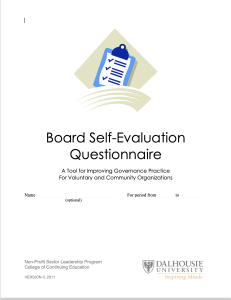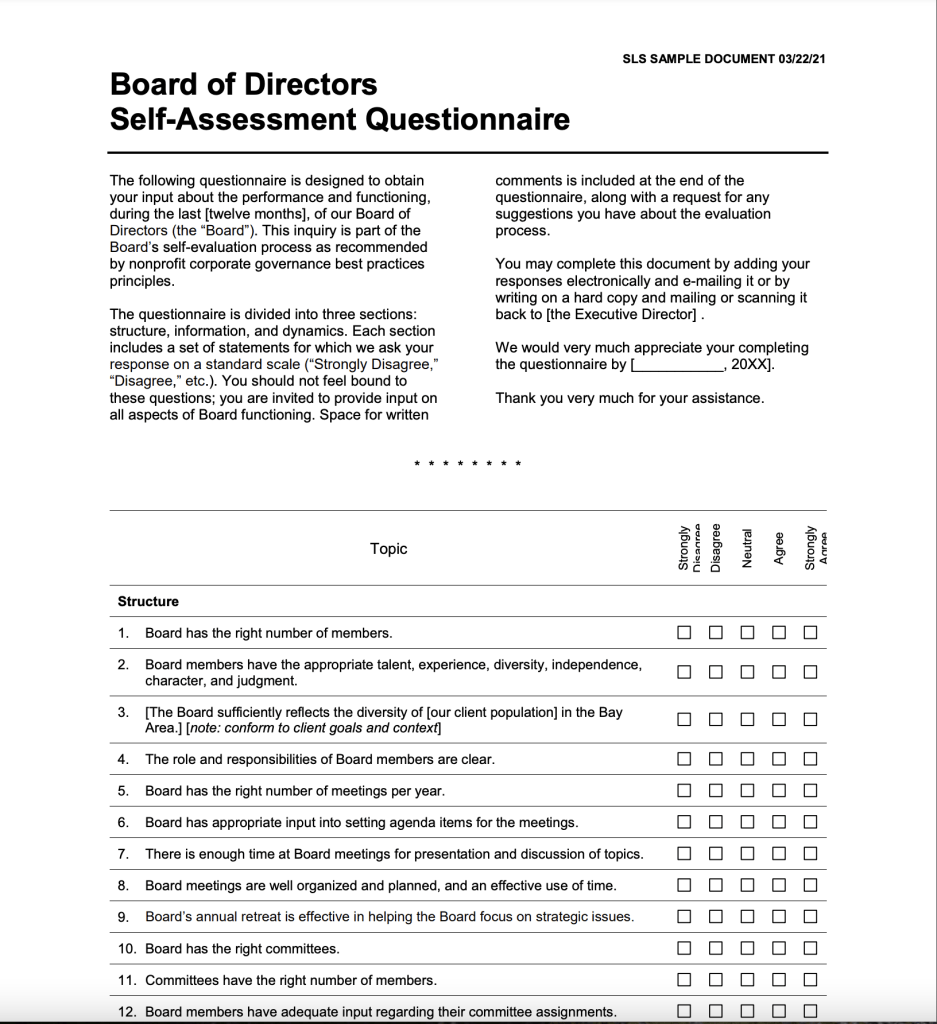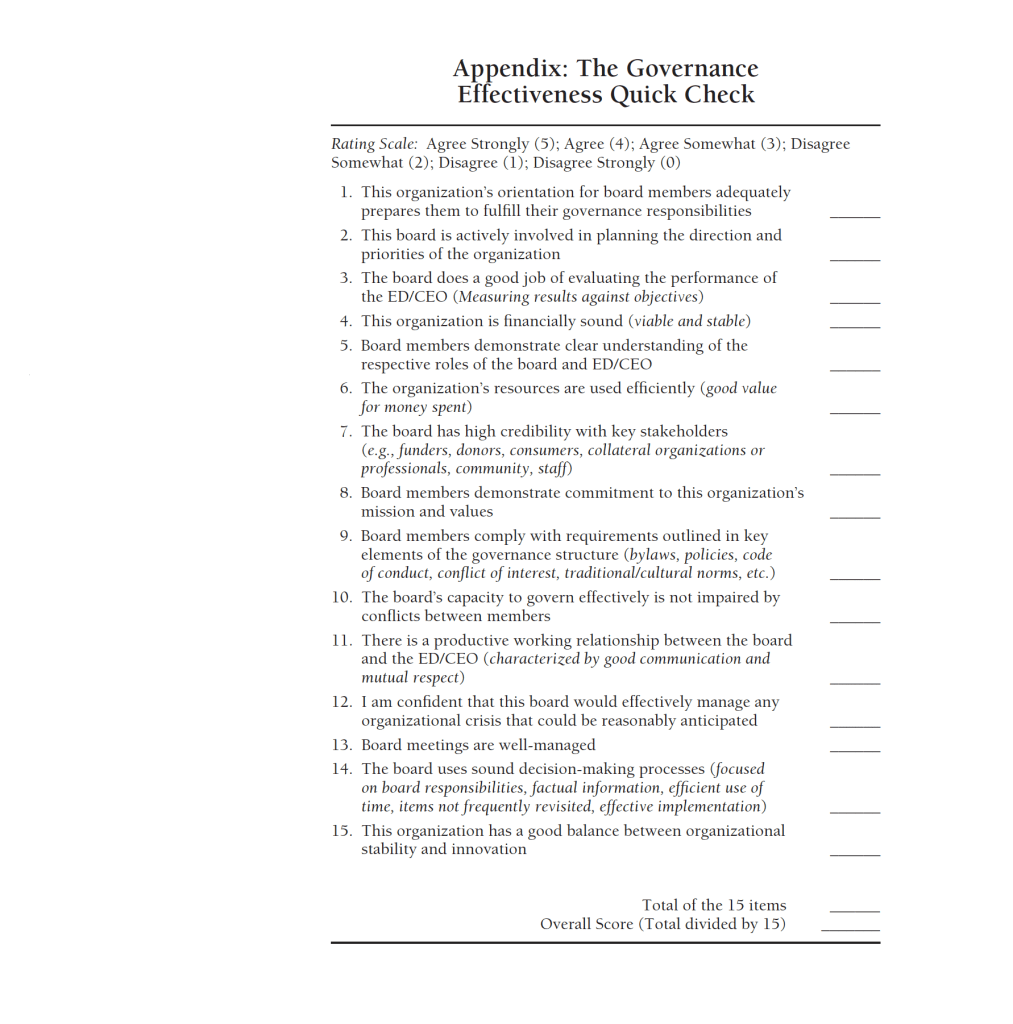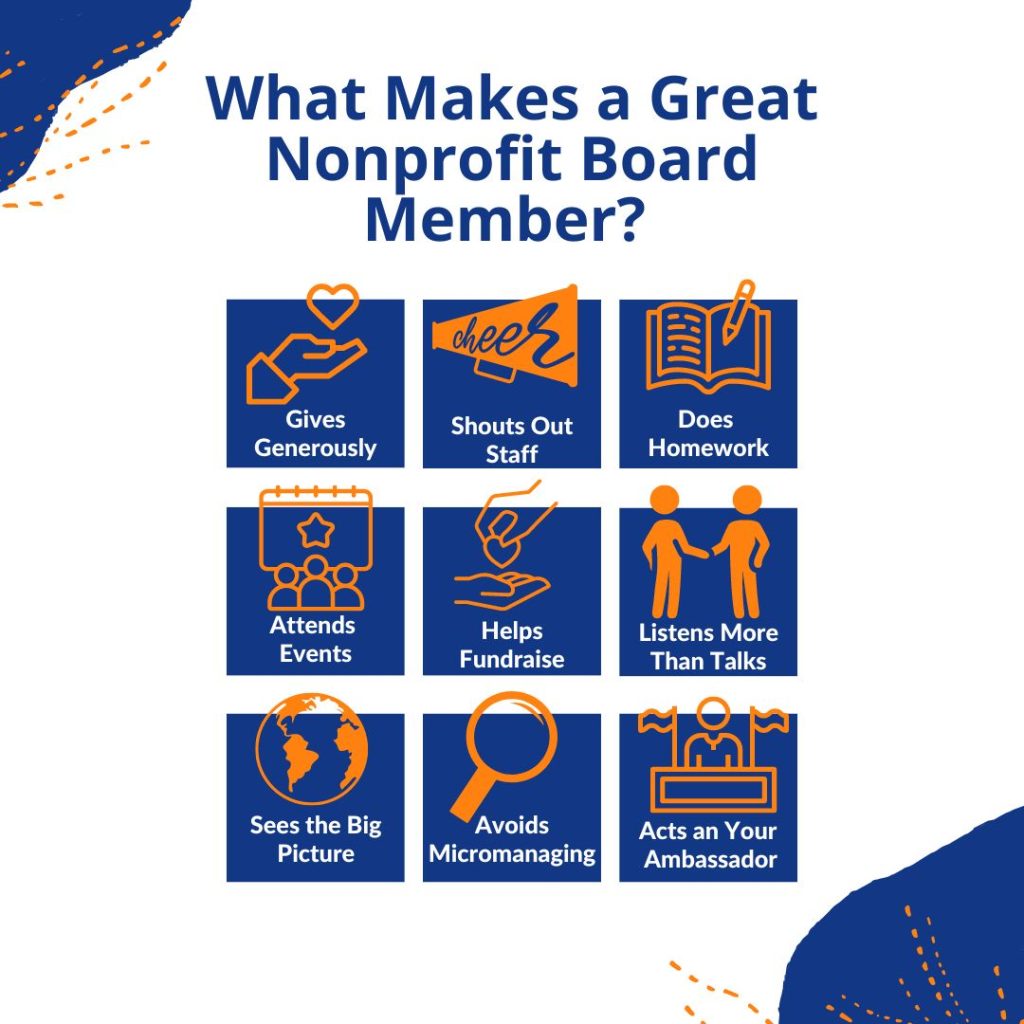
The Best Free Nonprofit Board Assessment Tools-Easy Solutions
Quick quiz: How often do you engage your board of directors in a self-assessment?
- Every year
- Every second or third-year
- Never
It turns out that nonprofits fall equally into one of these three buckets when it comes to board evaluations. No matter your answer, you’re in good company. But if you’re looking to strengthen your board’s effectiveness, this post will help.
Perhaps you’d like to join the first group (recommended!) but have faced budget or time constraints up to now. This post blows up roadblocks. When you finish reading it, you’ll understand why these assessments matter, how to convince your board to evaluate themselves, get answers to FAQ questions, and discover three easy and no-cost evaluation tools for in-meeting use.
Why Do Board Self-Assessments Matter?
Board evaluations allows board members to see their work and how their efforts spur the organization’s success and sustainability.
In terms of performance, chief executives rank their boards higher on “all areas of board performance if they regularly access themselves” within two years than those who wait longer and even “more highly than those that never assessed their own performance,” according to Lead with Intent.
Second, assessments provide value because, during the follow-up conversation, execs can recommend actions that serve the board and reduce their burnout, such as reaching out to absent members.
Also, you can design your evaluation to put nagging board questions to rest. For instance, you ask a feedback question about your board’s commitment to a critical decision and discover their content, so you remove it from future agendas.
Finally, they’re valuable because most nonprofits underuse board members’ gifts.
Board self-assessment enables the organization’s leadership to identify gaps between current performance and expected or hoped-for performance, as well as chart a course of improvement, refinement, and/or further progress.
BoardSource
How Often Should Your Board Evaluate Its Work?
Set a goal to evaluate your board yearly. While others recommend reviews at least every two years, since better board performance is valuable, why wait?
Should I Use the Same Evaluation Tool every year?
That depends. If you and your board seek year-to-year comparisons, reuse the tool. However, most groups benefit from different tools because each focuses on different board service areas, and even similar questions capture different responses.
If you’re easing your board into regular evaluations, I recommend your board rotate the depth of the reviews. For instance, year one conducts an in-depth assessment. In year two, complete a quick review.
When Is the Best Time to Schedule a Board Evaluation?
Here are several times my clients like to schedule:
- At the next meeting, especially if it’s been over a year
- As part of a strategic planning process or just before the yearly update
- A month with a short agenda
- Before onboarding new members
Whatever your choice, automatically schedule the next review in twelve months so assessments become a part of your daily operations.
How Did You Pick the Tools?
A flood of board assessment tools exists. To find the best, I sought:
- Quality, that is, the tool reminds members of their responsibilities and holds the potential to generate insights and behavior changes
- Free—at least to start
- Quick–it requires fifteen minutes or less to use the assessment.
- The tool must work in the boardroom so your board can explore questions and results together. A secret of effective board evaluation is letting the board explore how the group works (or doesn’t) together.
The Best Free Nonprofit Board Assessment Tools
1. Board Self-Evaluation Questionnaire

This Board Self-Evaluation Questionnaire is from the Nonprofit Sector Leadership Program College of Continuing Education at Dalhousie University in Canada. Its five sections cover the board’s collective behaviors, relationship with the exec, self-evaluation, and chair review.
Pros
Besides meeting the criteria above, the Questionnaire is easy to access (just click the link.) You’ll like its positive tone and the space offered for optional questions. Plus, it’s the most comprehensive document in this list.
Cons
It feels dated. The scoring system (members total one section at a time) will distract some from the content. It needs tweaking, i.e., strategic plans need updates at least every three years.
Board Self-Evaluation Questionnaire
- Length: Six pages, 41 questions, and room for write-ins
- Time to take: 15 minutes
- Score: 3.4 (I took each assessment reflecting on my current board service so you can see how the scores compare.)

2. Board of Directors Self-Assessment Questionnaire
The Board of Directors Self-Assessment Questionnaire is from a Stanford Law School law clinic. It contains four sections. Members examine the board’s structure, information gathering, group dynamics, and several open-ended questions.
Pros
This sample document uses tighter language and looks professional, plus the questions focus on evaluating what is going well (a plus.) The first three sections include statements members rank from strongly agree to disagree strongly.
Cons
The tool lacks an individual assessment, so your board will not review their individual performance. The tool needs minor alterations unless you work in the Bay area. Finally, no easy way exists to download it.

3. The Governance Effectiveness Quick Check
The Governance Effectiveness Quick Check is from Nonprofit Management & Leadership, page 22. It is an extended research-based tool with 144 items. As the name suggests, the questions focus on governance.
Pro
The Quick Check focuses on what most execs want from their boards—more board governance. The tool reminds the board of their work and will generate discussions about their tasks.
Con
The Quick Check is an example of the complete tool in the article. The Governance Self-Assessment Checklist (the complete tool) is available from mel.gill@synergyassociates.ca. In its current state, instead of handing out individual copies like the other tools, the Chair might read the item and ask the board to rate it.
The Governance Effectiveness Quick Check
- Length: one page, fifteen questions
- Time to take: 5 minutes
- Score 3.8
Wait! Wait! There’s More

Your 5-Minute Nonprofit Board Evaluation
Here’s another tool that fits the criteria from my resources. It was inspired by a graphic that lists the characteristics of an ideal board member: Your 5-Minute Nonprofit Board Evaluation.
Pro: The tool reminds boards of high-value board behaviors and affirms them. It’s speedy and evaluates the board collectively.
Con: Focus only on visible behaviors and creating a conversation about board service. You might, however, ask your board to retake it, considering their personal actions.
Your 5-Minute Nonprofit Board Evaluation
- Length: one page, nine questions
- Time to take: 5 minutes
- Score: 4
Other Resources for In-depth Reviews
This post focuses on high-quality free tools for rapid in-meeting assessments. If you seek a free in-depth tool, check out McKinsey & Co-Nonprofit Board Self-Assessment Tool Long Form. Many fee-based tools exist. If you have a favorite, please list it below. Finally, when it comes to in-depth evaluation, consider engaging a consultant. Here’s more on board work.
The Best Free Board Assessment Tools-Easy Solutions
Evaluation helps board members provide more value and get more value from their service, and CEOs bring out their board’s best. Board assessments belong in every nonprofit’s yearly calendar to increase board effectiveness.
When was the last time you evaluated your board? What tool did you use? When will you review your board next, and why?
Why Listen to Me?
Successful nonprofits, i.e., those that get windfall gifts from Mackenzie Scott and other donors, provide consistent mission-driven outcomes. For years, I’ve guided nonprofit execs to implement practices that lead to these results.
Planning for your board’s involvement and regular board assessments should be a standard part of your nonprofit’s strategy.
The stronger your board, the stronger your organization. Subscribe to Karen’s CEO Solutions for more strategic insights on leading your board and nonprofit to new heights.
Karen Eber Davis is a nonprofit strategic planning consultant who works with visionary leaders committed to taking their organizations to new heights. She offers customized strategies, assessments, and coaching designed to help leaders lead their organizations to achieve their potential. She is the author of 7 Nonprofit Income Streams and Let's Raise Nonprofit Millions Together.
Categories
If you appreciate these Added Value posts, please consider subscribing.
Latest Posts
- How New Nonprofit CEOs Secure Board Buy-In for Strategic Planning
- How Nonprofit Leader Navigate Crisis with Clarity & Confidence
- One Way AI Can Help You Find a Path Where None Exists
- In Crisis? Resist Cutting Your Ability to Make Income
- Nonprofit Strategic Planning Assessment: 10 Questions About Your Strategy
